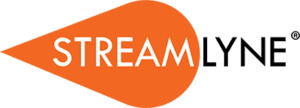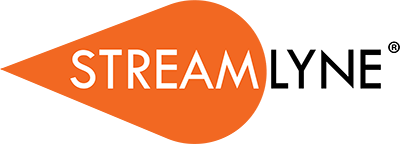
The grant seeking landscape has fundamentally transformed over the past few years, and artificial intelligence is at the center of this revolution. Traditional grant software tools offered little more than keyword search across funding databases. Today’s AI-powered platforms are doing something far more sophisticated: they’re actually understanding researcher needs and uncovering opportunities that manual searches would never find.

1. Understanding Context, Not Just Keywords
The first generation of grant software tools required users to think like database administrators. You needed to know exactly which keywords might appear in a funding announcement and construct complex search strings to find relevant opportunities. Miss a synonym or fail to account for variations in terminology, and you’d miss opportunities.
AI-powered grant software tools take a completely different approach. They understand context and intent. When a researcher describes their work in plain language—even using terminology specific to their discipline—the AI can map that to relevant funding opportunities, even when the exact words don’t match.
This contextual understanding extends to comprehending complex requirements. If a researcher needs “collaborative funding for early-career investigators in neuroscience with budgets over $750K,” an AI-powered grant software tool can parse all those requirements simultaneously and surface truly relevant matches, not just opportunities that contain some of those keywords.
2. Discovering Hidden Funding Sources
One of the most valuable capabilities of AI-powered grant software tools is their ability to find opportunities buried in less obvious places. Not all funding is announced through major federal agencies or well-known private foundations. Some of the most interesting opportunities come from industry partnerships, regional organizations, or newly established programs that haven’t yet gained visibility.
Traditional grant software tools rely on users knowing where to look. AI-powered platforms can continuously scan a much broader universe of potential funding sources, including websites, announcements, and databases that researchers would never think to check manually.
This means researchers using advanced grant software tools gain a significant competitive advantage. While others are all applying for the same well-known programs, they’re finding opportunities with better fit and potentially less competition.
3. Learning from Institutional History
Particularly sophisticated grant software tools can be trained on your institution’s historical proposal data. This allows the AI to understand what types of projects have been successful for your faculty in the past and use that pattern recognition to identify promising opportunities going forward.
For research administrators, this capability transforms grant software tools from passive databases into strategic partners. The system learns which funding agencies have been receptive to your institution’s proposals, which types of projects align well with institutional strengths, and even which collaborations have led to funding success.
This institutional intelligence compounds over time. The more your institution uses an AI-powered grant software tool, the smarter it becomes about what will work for your specific context.
4. Enabling Proactive Opportunity Alerts
Rather than requiring researchers to regularly log in and search for opportunities, modern grant software tools can work proactively. Once a researcher’s profile is established, the AI continuously monitors for new opportunities that match their interests and expertise.
These aren’t generic email blasts about every new funding opportunity. AI-powered grant software tools send targeted alerts about opportunities with genuine relevance. Integration with platforms like Slack and Microsoft Teams means these notifications arrive where researchers are already working, dramatically improving response rates.
For time-strapped faculty members, this proactive approach is transformative. Instead of grant seeking feeling like an additional burden on top of teaching and research responsibilities, relevant opportunities come to them automatically.
5. Facilitating Strategic Team Building
Many significant funding opportunities require collaborative, multidisciplinary teams. Identifying potential collaborators with complementary expertise can be as challenging as finding the grant itself. AI-powered grant software tools are increasingly incorporating sophisticated team-building features.
These platforms can analyze researcher profiles across an institution (or even across multiple institutions) to suggest potential collaborators based on expertise alignment, publication synergies, and track records of successful partnership. Some grant software tools can even identify gaps in a proposed team that need to be filled to maximize competitiveness.
For VPRs and research administrators, these team-building capabilities provide valuable intelligence about institutional capacity and help facilitate the kinds of large-scale collaborative projects that drive institutional reputation and funding success.
6. Providing Transparent Decision-Making
One challenge with AI systems is the “black box” problem—users don’t understand why they’re seeing particular results. Leading grant software tools are addressing this by providing transparent reasoning about why opportunities are being recommended.
When a grant software tool explains that an opportunity is a strong match because it aligns with the researcher’s recent publications, matches their career stage, and falls within their stated budget range, users develop trust in the system. They can also provide feedback to refine future recommendations, creating a positive feedback loop that improves results over time.
This transparency is particularly important for research administrators who need to make strategic decisions based on grant software tool insights. Understanding the reasoning behind recommendations allows for informed judgment about which opportunities deserve institutional investment.
7. Scaling Institutional Research Development Capacity
Perhaps the most significant impact of AI-powered grant software tools is their ability to dramatically scale research development support. Even well-resourced institutions rarely have enough research development staff to provide personalized attention to every faculty member seeking funding.
Grant software tools powered by AI effectively provide each researcher with a personalized research development assistant. The platform handles the time-consuming work of opportunity discovery and preliminary matching, allowing human research development professionals to focus on higher-value activities like proposal strategy, team formation, and application development support.
For smaller institutions with limited research administration capacity, AI-powered grant software tools can be genuinely transformative, providing capabilities that would otherwise require a much larger staff.
The Competitive Imperative
As AI-powered grant software tools become more prevalent, institutions that don’t adopt them face a growing competitive disadvantage. When some institutions have faculty discovering opportunities earlier, building stronger teams, and targeting their efforts more effectively, those still using manual methods inevitably fall behind.
The funding landscape is too competitive for institutions to leave opportunities on the table. AI-powered grant software tools aren’t just about convenience—they’re increasingly essential infrastructure for research-intensive institutions.
Implementation Considerations
Adopting an AI-powered grant software tool requires thoughtful implementation. Success depends on researcher adoption, which in turn depends on demonstrating clear value quickly. Start with enthusiastic early adopters who can become institutional champions. Invest in training that focuses not just on features but on outcomes: how the tool will help researchers secure more funding with less effort.
Integration with existing institutional systems matters too. The easier it is for researchers to incorporate grant software tool use into their existing workflows, the higher adoption rates will be.
Transform Your Research Funding Strategy
AI-powered grant software tools represent a fundamental shift in how institutions and researchers approach funding discovery. From uncovering hidden opportunities to facilitating team formation to scaling research development capacity, these platforms are changing what’s possible in research funding.
FundFit AI brings together all these AI-powered capabilities in an intuitive platform designed for both institutional and individual researcher needs. With natural language search, transparent AI reasoning, and seamless integration with the tools you already use, FundFit ensures you never miss a funding opportunity that matters.
See how AI can power your next successful proposal: https://streamlyne.com/fundfit

